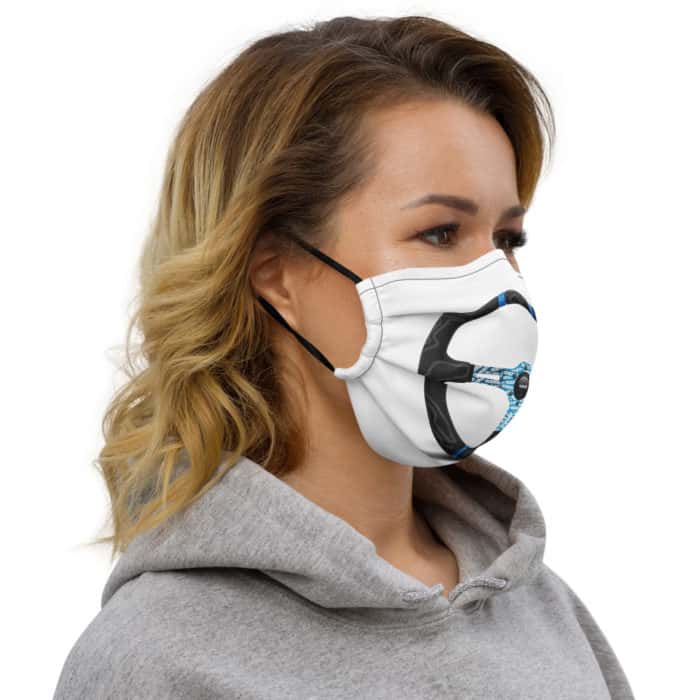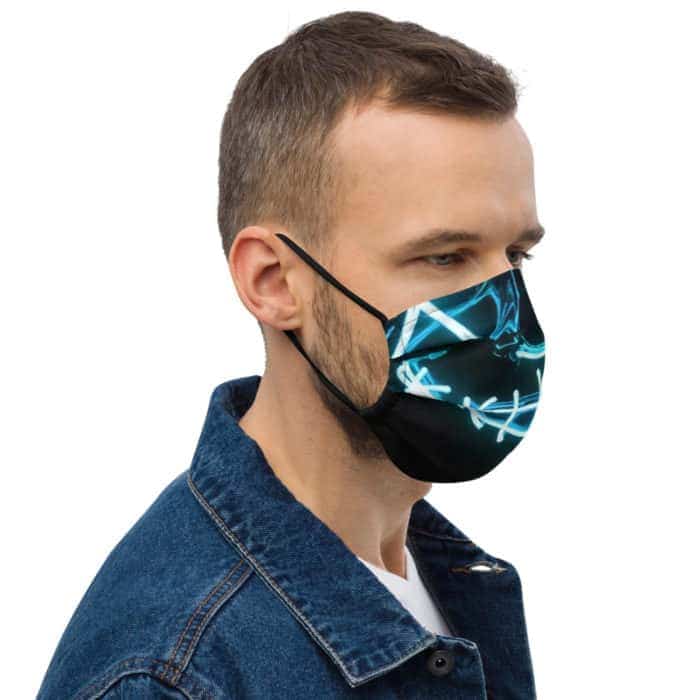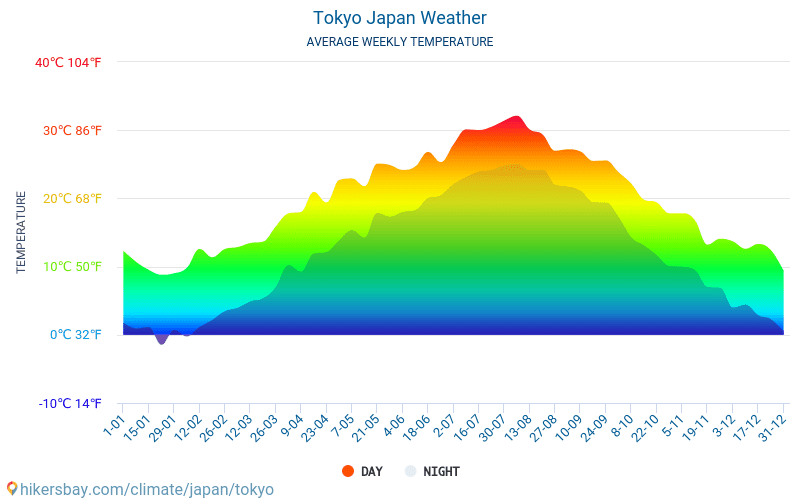Planning a trip to Tokyo and wondering what to wear? Look no further! In this guide, we will help you navigate the fashion scene of Japan’s bustling capital city, ensuring you are dressed appropriately and stylishly for your Tokyo adventure.
1. Current Weather in Tokyo
As a fashion-forward individual, it’s essential to stay up-to-date with the current weather in Tokyo. After all, you don’t want to be caught off guard by unexpected rain showers or scorching heatwaves. Tokyo experiences four distinct seasons, each with its own unique climate.
In spring (March to May), Tokyo is blessed with cherry blossoms, but it can also be quite unpredictable. One day you might need a light jacket as temperatures hover around 15°C (59°F), and the next day you could be basking in 25°C (77°F) warmth.
Summer (June to August) brings hot and humid weather to Tokyo, with temperatures reaching an average of 30°C (86°F). It’s important to dress comfortably and opt for breathable fabrics like cotton or linen during this time. Don’t forget your umbrella either, as summer showers are not uncommon!
Fall (September to November) is a delightful season in Tokyo when temperatures start to cool down. You can expect mild weather ranging from 15°C (59°F) to 25°C (77°F). It’s the perfect time to embrace layering and experiment with stylish jackets and scarves.
Winter (December to February) in Tokyo can get chilly, but it rarely snows. Temperatures range from 5°C (41°F) to 10°C (50°F), so make sure you pack warm coats, sweaters, and accessories like hats and gloves. Layering is key during this season!
2. Variations in Tokyo’s Weather Throughout the Year
Tokyo’s climate varies significantly throughout the year due to its geographical location and influence from different air masses. Understanding these variations will help you plan your outfits accordingly and ensure you’re prepared for any weather surprises.
Spring:
Spring in Tokyo is a season of transition. In March, the city starts to emerge from the cold winter, and temperatures gradually rise. However, it can still be quite chilly, especially in the evenings. April and May bring milder temperatures and the famous cherry blossoms, but occasional rain showers are common.
Summer:
Summer in Tokyo is hot and humid. June marks the start of the rainy season (tsuyu), with frequent showers and high humidity levels. July and August are the hottest months, with temperatures often exceeding 30°C (86°F). Be prepared for intense heat and occasional typhoons during this time.
Fall:
Fall in Tokyo is characterized by pleasant weather and beautiful autumn foliage. September can still feel like summer, but temperatures gradually cool down as October approaches. November brings cooler days and occasional rain showers. Layering becomes important during this season to adapt to changing temperatures.
Winter:
Winter in Tokyo is relatively mild compared to other parts of Japan. December is cool but not freezing, with temperatures ranging from 5°C (41°F) to 12°C (54°F). January and February are the coldest months, with average temperatures around 2°C (36°F) to 10°C (50°F). While snowfall is rare, it’s always a good idea to pack warm clothing for those chilly days.
3. Clothing Recommendations for Each Season in Tokyo
Dressing appropriately for each season in Tokyo will not only keep you comfortable but also allow you to blend in seamlessly with the locals’ fashion sense. Here are some clothing recommendations for each season:
Spring:
- Lightweight jackets or cardigans for cooler days
- T-shirts or blouses paired with jeans or skirts
- Comfortable walking shoes for exploring cherry blossom spots
- An umbrella or a lightweight raincoat for the occasional showers
Summer:
- Breathable fabrics like cotton and linen to combat the heat and humidity
- Loose-fitting dresses, shorts, or skirts paired with light tops
- Sunscreen, sunglasses, and hats to protect yourself from the sun
- Comfortable sandals or sneakers for long walks in the city
Fall:
- Layering pieces like sweaters, cardigans, and light jackets for fluctuating temperatures
- T-shirts or blouses paired with jeans or trousers
- Stylish boots or comfortable closed-toe shoes for walking on fallen leaves
- A scarf and gloves for colder days in late fall
Winter:
- Warm coats, wool sweaters, and thermal layers to stay cozy in the cold weather
- Hats, scarves, and gloves to protect yourself from chilly winds
- Trousers or jeans paired with long-sleeved shirts
- Durable boots with good traction to navigate icy sidewalks
- A stylish umbrella to shield you from snow flurries or rain showers
4. Fashion Trends in Tokyo Right Now
Kawaii Culture
Tokyo is known for its vibrant and unique fashion scene, and one of the current trends dominating the city is Kawaii culture. Kawaii, which means “cute” in Japanese, encompasses a range of styles that emphasize childlike innocence and playfulness. This trend can be seen in the popularity of pastel colors, oversized bows, frilly dresses, and accessories adorned with cartoon characters.
Streetwear Influence
Another prominent fashion trend in Tokyo right now is streetwear. Influenced by hip-hop and skateboarding culture, streetwear combines comfort and style with bold graphics and logos. Popular brands like A Bathing Ape (Bape) and Supreme have gained a cult following among young Tokyoites. Oversized hoodies, baggy pants, sneakers, and baseball caps are key elements of this trend.
Lists:
- Pastel colors
- Oversized bows
- Frilly dresses
- Accessories with cartoon characters
- Oversized hoodies
- Baggy pants
- Sneakers
- Baseball caps
5. Cultural Considerations for Choosing Outfits in Tokyo
When visiting Tokyo, it’s important to consider cultural norms and customs when selecting your outfits. While Japan is generally a fashion-forward country, there are still some guidelines to follow to show respect for the local culture.
Modesty is Key
In Japan, modesty is highly valued. It’s advisable to avoid wearing revealing clothing, such as low-cut tops or short skirts, especially when visiting religious sites or traditional areas. Opt for more conservative outfits that cover your shoulders and knees to blend in with the locals.
Remove Shoes Indoors
Japanese homes, temples, and some restaurants have a tradition of removing shoes before entering. To be respectful, choose slip-on shoes or sandals that are easy to take off and put on. It’s also a good idea to wear clean socks or bring a pair of disposable slippers if you’re uncomfortable walking barefoot.
Lists:
- Avoid revealing clothing
- Choose conservative outfits
- Wear slip-on shoes or sandals
- Bring clean socks or disposable slippers
6. Comfortable yet Stylish Footwear Options for Exploring Tokyo
Sneakers
Exploring Tokyo often involves a lot of walking, so it’s essential to have comfortable footwear. Sneakers are a popular choice among both locals and tourists due to their versatility and support. Opt for stylish sneakers that can be paired with different outfits while providing cushioning for long walks.
Ballet Flats
If you prefer a more feminine look without compromising comfort, ballet flats are an excellent option. They offer a balance between style and practicality, allowing you to explore the city while maintaining a chic appearance. Look for flats with cushioned insoles and arch support to ensure maximum comfort.
List:
- Sneakers (versatile and supportive)
- Ballet flats (feminine and comfortable)
7. Dress Codes and Restrictions at Popular Tourist Attractions in Tokyo
Temples and Shrines
When visiting temples and shrines in Tokyo, it’s important to dress appropriately as a sign of respect. Avoid wearing revealing clothing, such as tank tops or shorts, and opt for modest outfits that cover your shoulders and knees. Some religious sites may also require you to remove your shoes before entering, so choose footwear that is easy to take off.
Traditional Tea Houses
If you plan on experiencing a traditional tea ceremony in Tokyo, it’s customary to dress slightly more formal. Women can wear dresses or skirts paired with blouses, while men should opt for collared shirts and trousers. Avoid casual attire like jeans or t-shirts to show respect for the cultural significance of the tea ceremony.
List:
- Avoid revealing clothing at temples and shrines
- Choose modest outfits that cover shoulders and knees
- Select formal attire for traditional tea houses
- Avoid casual attire like jeans or t-shirts for tea ceremonies
8. Essential Items to Pack for a Trip to Tokyo, Regardless of the Season
No matter what time of year you visit Tokyo, there are some essential items you should always pack to ensure a comfortable trip.
Comfortable Walking Shoes
As mentioned earlier, exploring Tokyo involves a lot of walking, so make sure to pack comfortable walking shoes. Choose shoes with good arch support and cushioning to prevent foot fatigue during long days of sightseeing.
Portable Umbrella
Tokyo’s weather can be unpredictable, so it’s wise to carry a portable umbrella with you. This will come in handy during sudden rain showers or to shield yourself from the sun on hot days.
Lightweight Jacket or Cardigan
Even during the warmer months, Tokyo can experience cooler evenings or air-conditioned indoor spaces. Pack a lightweight jacket or cardigan that you can easily layer over your outfits for added warmth and comfort.
List:
- Comfortable walking shoes (with arch support and cushioning)
- Portable umbrella
- Lightweight jacket or cardigan
9. Effective Layering Techniques for Adapting to Changing Temperatures in Tokyo
Tokyo’s weather can vary greatly throughout the day, so mastering effective layering techniques is essential for adapting to changing temperatures.
Base Layer: Lightweight Fabrics
Start with a base layer made of lightweight fabrics, such as cotton or linen. These materials are breathable and help regulate body temperature during warmer periods.
Middle Layer: Sweaters or Light Jackets
Add a middle layer with sweaters or light jackets that can be easily removed if it gets too warm. Opt for versatile pieces that can be tied around your waist or carried in a bag when not needed.
Outer Layer: Waterproof and Windproof Jacket
To prepare for rain showers or chilly winds, always carry an outer layer that is waterproof and windproof. This will keep you dry and protected from unexpected weather changes.
List:
- Base layer: Lightweight fabrics (cotton, linen)
- Middle layer: Sweaters or light jackets
- Outer layer: Waterproof and windproof jacket
10. Recommended Local Boutiques and Stores for Fashionable Clothes in Tokyo
Harajuku District
Harajuku is a must-visit neighborhood for fashion enthusiasts in Tokyo. It offers a variety of boutiques and stores that cater to different styles, from trendy streetwear to vintage fashion. Some popular shops include WEGO, Spinns, and Kiddy Land.
Ginza District
If you’re looking for high-end designer brands, head to the Ginza district. Here you’ll find luxury department stores like Mitsukoshi and Matsuya, as well as flagship stores for renowned fashion houses such as Chanel and Louis Vuitton.
List:
- Harajuku District (WEGO, Spinns, Kiddy Land)
- Ginza District (Mitsukoshi, Matsuya, Chanel, Louis Vuitton)
11. Prioritizing Fabrics and Materials when Selecting Clothing for a Trip to Tokyo
The choice of fabrics and materials can greatly impact your comfort while exploring Tokyo’s diverse climate.
Breathable Fabrics
Prioritize breathable fabrics like cotton or linen that allow air circulation and prevent excessive sweating during hot and humid days in Tokyo.
Quick-Drying Materials
In case of unexpected rain showers or if you plan on visiting attractions with water features, choose quick-drying materials like polyester or nylon that dry fast to avoid discomfort throughout the day.
List:
- Breathable fabrics (cotton, linen)
- Quick-drying materials (polyester, nylon)
12. Popular Colors and Patterns in Japanese Fashion Currently
Pastel Colors
Pastel colors are currently popular in Japanese fashion. Soft shades of pink, lavender, mint green, and baby blue can be seen in clothing and accessories, adding a touch of sweetness to outfits.
Floral Prints
Floral prints are a timeless favorite in Japanese fashion. Delicate cherry blossoms or vibrant floral patterns can be found on dresses, blouses, and even accessories like scarves or handbags.
List:
- Pastel colors (pink, lavender, mint green, baby blue)
- Floral prints (cherry blossoms, vibrant florals)
13. Accessories that Complement Outfits while Visiting Tokyo’s Landmarks
Statement Earrings
Add a touch of glamour to your outfits by wearing statement earrings. Choose bold designs or oversized hoops that complement your overall look while exploring Tokyo’s landmarks.
Crossbody Bag
A crossbody bag is a practical accessory that keeps your belongings secure while leaving your hands free for taking photos or navigating through crowded areas. Opt for a stylish yet functional design that matches your outfit.
List:
- Statement earrings (bold designs or oversized hoops)
- Crossbody bag (stylish and functional)
14. Appropriate Dressing for Daytime Sightseeing and Nighttime Activities in Tokyo
Daytime Sightseeing
For daytime sightseeing in Tokyo, prioritize comfort without sacrificing style. Opt for lightweight and breathable clothing, such as a loose-fitting blouse or t-shirt paired with comfortable pants or shorts. Don’t forget to wear sunscreen and a hat to protect yourself from the sun.
Nighttime Activities
When dressing for nighttime activities in Tokyo, you can elevate your look by opting for slightly dressier outfits. Consider wearing a stylish dress or tailored trousers paired with a blouse. Add some accessories like statement jewelry or a clutch to complete your evening ensemble.
List:
- Daytime sightseeing: Lightweight and breathable clothing, sunscreen, hat
- Nighttime activities: Dressier outfits (dress or tailored trousers), statement jewelry, clutch
In conclusion, deciding what to wear in Tokyo can be a fun and exciting experience! With its vibrant fashion scene and unique street styles, there are endless possibilities to express yourself. Whether you prefer blending in with the locals or standing out with your own fashion statement, Tokyo has something for everyone.
If you’re feeling adventurous and want to take your style game to the next level, why not consider exploring the world of cosplay? Our wide range of cosplay products can help you transform into your favorite character and truly immerse yourself in Tokyo’s anime and manga culture.
So go ahead, experiment with different outfits, embrace the city’s fashion diversity, and make a statement wherever you go! If you have any questions or need assistance finding the perfect cosplay attire, feel free to get in touch with us. We’d be more than happy to help you unleash your inner cosplayer and make your Tokyo experience even more memorable.

What should I wear in Japan now?
During the cooler days and evenings of spring and fall, it is recommended to wear lightweight layers such as a sweater or cardigan over a long-sleeved shirt to keep warm. In the winter, it is essential to have a coat or insulated jacket, and it is also advisable to carry a light raincoat or umbrella as Japan is known to have sudden rain showers.
Does Tokyo have a dress code?
There is no specific dress code for a night out in Tokyo’s nightlife. You have the option to dress casually in t-shirts and jeans, or dress up in a nice shirt or dress with heels. Alternatively, you can go all out with costumes and gowns for a more extravagant look.
https://img.rawpixel.com/s3fs-private/rawpixel_images/website_content/sk10290-image-kwvurizp.jpg?w=800&dpr=1&fit=default&crop=default&q=65&vib=3&con=3&usm=15&bg=F4F4F3&ixlib=js-2.2.1&s=340613cc6cad013368a69524202875f3
What colors should I wear in Japan?
Opt for understated colors like black, white, navy, or beige. If you prefer patterns, choose subtle options like stripes or dots. Women typically wear a shirt with a cardigan or jacket, along with a knee-length skirt or trousers. In Japan, it is not customary to wear a hat or cap in an office setting.
Can you wear leggings in Japan?
Leggings are acceptable to wear in Japan, particularly during colder weather. However, it is essential to recognize that dress codes may differ based on the location and event. It is advisable to dress modestly and avoid clothing that is overly revealing or provocative.
Can I wear crop tops in Tokyo?
Japan has a fashion-forward culture but also values a more conservative fashion sense, avoiding clothing items like crop tops, sweatpants, or low-cut tops. In major cities like Tokyo, you will find streetwear and fashionable sneakers, but the overall style leans towards a smart casual look.
Do you have to wear a bra in Japan?
In the past, it was common for Japanese people to wear Hadajyuban and Susoyoke instead of bras and underwear to conceal their skin and body shape. However, nowadays, many people prefer to wear regular bras and underwear, and the “No Bra, No Underwear” rule is not strictly followed.












